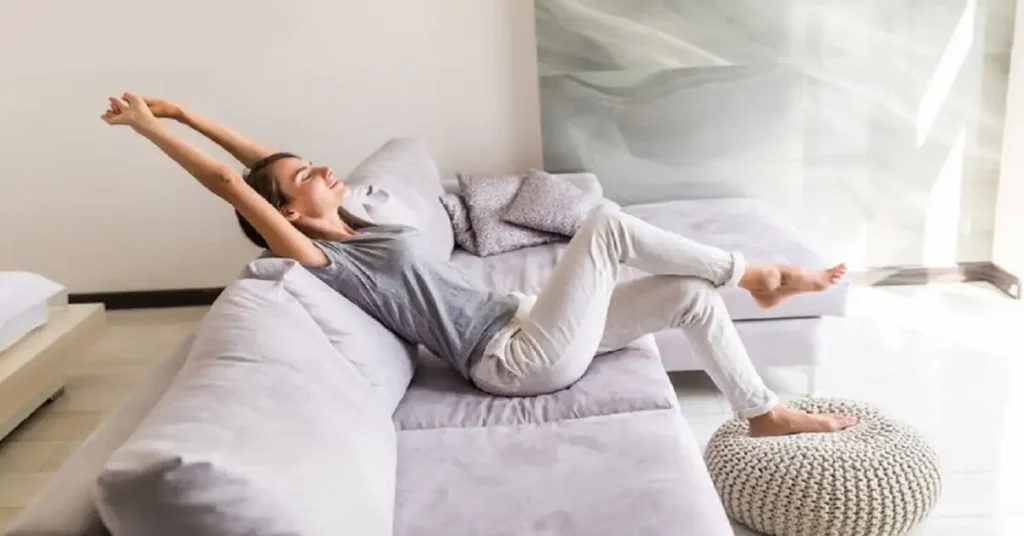A clean home isn’t just about appearances – it’s about health, comfort, and peace of mind. Beyond the sparkle and shine, regular cleaning routines play a critical role in helping reduce allergens and dust that can seriously impact our immune systems and quality of life. Whether you’re sensitive to pet dander, pollen, or simply sick of waking up stuffy-headed, cleaning with purpose can transform your home into a more breathable, relaxing space.
Why a Clean Home Is a Healthier Home
Our homes collect more than clutter – they gather particles, pollutants, and bacteria that quietly impact how we feel each day.
The Hidden Impact of Dust and Allergens
Dust isn’t just a nuisance. It’s a blend of dead skin cells, fabric fibers, pet hair, insect particles, and more. When left unchecked, it becomes a breeding ground for dust mites and can trigger allergic reactions or respiratory discomfort, especially in children and older adults.
- Common triggers: Pollen, pet dander, mold spores, and even cleaning chemicals.
- Health effects: Chronic sneezing, coughing, itchy eyes, headaches, and disrupted sleep.
Establishing a consistent cleaning routine is one of the most effective ways to lower exposure to these airborne irritants.
Room-by-Room Cleaning for Cleaner Air
Tackling your space strategically – one area at a time – makes it easier to manage and more effective in the long run.
Kitchen: A Hidden Magnet for Airborne Irritants
Even though we associate the kitchen with food, it’s a surprising source of dust and allergens.
- Wipe down cabinets and the top of the fridge weekly.
- Clean under appliances at least once a month.
- Use a vent fan while cooking to reduce airborne grease and smoke particles.
Don’t forget to wash dish rags and sponges regularly. They harbor bacteria and unpleasant odors if left unchecked.
Bedrooms: A Restful Retreat, Not a Dust Haven
Your bedroom should support restful sleep – not stuffy sinuses.
- Wash bedding weekly in hot water.
- Vacuum under the bed and behind furniture monthly.
- Use dust-mite-proof covers for pillows and mattresses.
Consider minimizing textiles (like heavy drapes or extra throw pillows) if you’re particularly sensitive to dust.
Bathrooms: Mold’s Favorite Playground
Bathrooms require more than surface-level attention. Dampness creates an ideal environment for mold and mildew.
- Wipe down shower walls after use.
- Run a fan during and after showers to reduce moisture.
- Scrub grout and tile lines regularly to prevent buildup.
Inspect for hidden mold around faucets, underneath sinks, and around caulking.
Living Areas: High Traffic, High Priority
From pet fur to snack crumbs, living rooms collect it all. Daily tidying combined with weekly deeper cleans keeps it livable.
- Vacuum rugs and upholstery weekly – more often if pets share the space.
- Dust bookshelves, electronics, and decor pieces.
- Clean ceiling fans and vents monthly to avoid recirculating dust.
For extra protection, consider using an air purifier with a HEPA filter in main living areas.
Don’t Forget These Commonly Missed Spots
Even the most diligent cleaner can overlook the small stuff. These areas often get skipped but collect a surprising amount of grime.
Baseboards and Door Frames
Wipe them down every few weeks with a damp cloth. They quietly accumulate dust and contribute to poor air quality if ignored.
Window Tracks and Blinds
Use a microfiber cloth or a vacuum attachment to suck up debris. Clean window sills and tracks seasonally, especially during pollen-heavy months.
Air Vents and Filters
Change HVAC filters every 1-3 months. Dust and allergens spread quickly through air systems if filters are clogged or outdated.
Under and Behind Furniture
Use a long-handled duster or move furniture seasonally. These areas trap dust bunnies and crumbs that can attract pests.
Pet Owners, Take Note
We love our furry friends, but they can make cleaning more complicated. Pet hair, dander, and dirt from outside can spread quickly.
Keep Your Home Pet-Friendly and Clean
- Brush your pets regularly to reduce shedding indoors.
- Clean pet bedding weekly.
- Vacuum carpets and furniture with a pet-specific attachment or vacuum model.
If your pets sleep in your bed, wash your linens more frequently to avoid buildup.
Tools That Do the Heavy Lifting
You don’t need a closet full of fancy equipment. Just a few quality tools can make cleaning faster and more effective.
Must-Haves for Allergy-Fighting Cleaning
- Microfiber cloths: Trap dust without spreading it.
- HEPA vacuum: Filters tiny particles that trigger allergies.
- Non-toxic cleaners: Avoid harsh chemicals that irritate sensitive lungs.
- Steam mop: Great for floors and grout without needing chemical solutions.
Keep your tools clean too – wash cloths regularly and change vacuum filters as recommended.
When to Consider Professional Help
Sometimes life gets too hectic, or allergies get too intense to handle it all on your own. Bringing in a professional cleaning service can give you a deep-clean reset, making it easier to maintain a healthier home going forward.
Professional cleaners, like those at https://www.geauxmaids.com, know how to reach all the hidden places and often use tools that go beyond basic at-home equipment. Whether it’s a seasonal deep clean or ongoing help, the extra support can make a noticeable difference in air quality and overall comfort.
Breathe Easier, Live Better
The cleanliness of your home affects more than its appearance – it directly influences your well-being. By making small changes to your cleaning habits, using the right tools, and being mindful of commonly missed spots, you can create a living space that not only looks better but feels better too.
Start small, stay consistent, and you’ll notice the difference in every breath you take. Clean air starts at home – and it starts with you.



